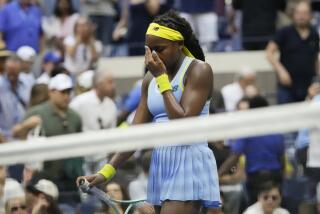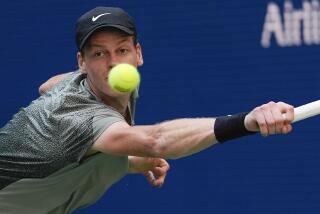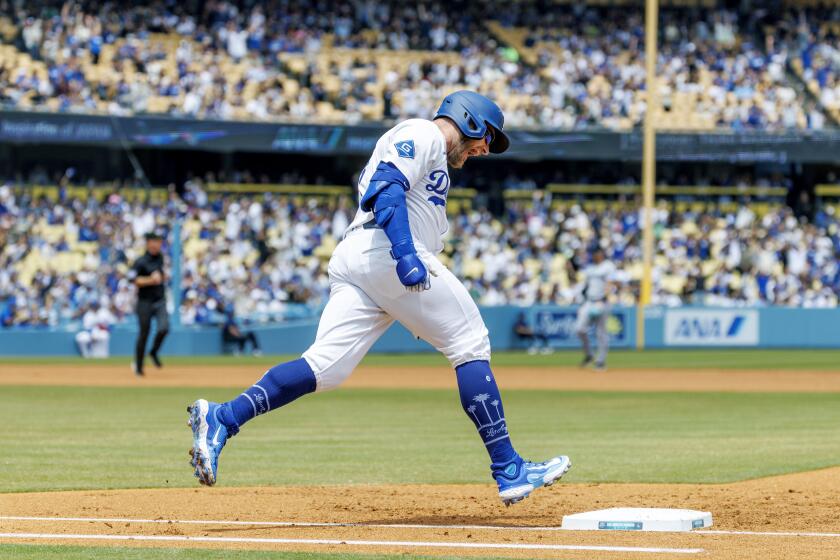Novak Djokovic reaches fourth round of U.S. Open despite sore wrist

- Share via
With a sore left wrist, the last thing Novak Djokovic wanted was a heavy workload during the first week of the U.S. Open.
Oddly, he has gotten quite the opposite.
Djokovic played all of six games in his last two matches and is in the fourth round. On Friday, Mikhail Youzhny of Russia retired after six games against Djokovic because of a strained left hamstring. Jiri Vesely of the Czech Republic didn’t even make it out to the court, withdrawing before their second-round match on Wednesday because of an injured arm.
“This particular situation I never had in my Grand Slam career,” said Djokovic. “But considering the stage of the season, the amount of matches I’ve played, what I’ve been through with my body, it’s actually good to have some days off and then shorter matches from one side.
“From the other side, sure, as you are approaching second week of the Grand Slam you want to have match play. You want to have time spent on the center court before you face one of the top players. “But, again, I’m not too concerned about my game itself.”
His next opponent, Kyle Edmund of Britain, appears to be healthy. Edmund upset No. 20-seeded John Isner, 6-4, 3-6, 6-2, 7-6 (5), saving six of seven break points to reach the fourth round at a Grand Slam for the first time. Edmund wasn’t fazed by the home-crowd support for the American, Isner.
“I did find it a little more like a Davis Cup atmosphere,” Edmund said. “It was pretty loud.”
Great escape
Eighth-seeded Madison Keys was sparked by the fervent support of the Arthur Ashe Stadium crowd, rallying from a 5-1 third-set deficit against Naomi Osaka of Japan, winning, 7-5, 4-6, 7-6 (3), in the third round. Osaka was two points from winning but missed a volley at 30-30 in the 10th game of the third set.
Osaka called it a “very ridiculous volley,” adding, “I feel like if I had a better plan, then at 5-1, I wouldn’t have freaked out and been like, ‘What do I do at this point?’”
Keys called it the best comeback victory of her career. She also was blunt when she talked about what was going through her mind on the 30-30 point.
“As soon as she went to hit the volley it was just kind of, ‘Please, God, get to the ball or please go out,’” Keys said.
Keys has been on the edge of elimination twice here, also coming within two points of losing in her first match.
Less drama is a goal going forward.
“… I don’t want to be two points from losing again,” Keys said. “So really looking forward to trying to have straightforward matches.”
On the clock
The U.S. Open is edging forward in terms of technology, planning to utilize a serve clock at its junior event and collegiate invitational here.
Players are allowed 20 seconds between points. Twenty seconds, by some individuals, has been treated more like a suggestion than a rule.
“We’re going to try out the serve clock,” said the United States Tennis Assn.’s Stacy Allaster, chief executive, professional tennis, in a statement.
“We are not changing the rules, but we are testing the technology and getting the umpires and players used to it. We can use the events as incubators for innovation.”
Follow Lisa Dillman on Twitter @reallisa
More to Read
Go beyond the scoreboard
Get the latest on L.A.'s teams in the daily Sports Report newsletter.
You may occasionally receive promotional content from the Los Angeles Times.











